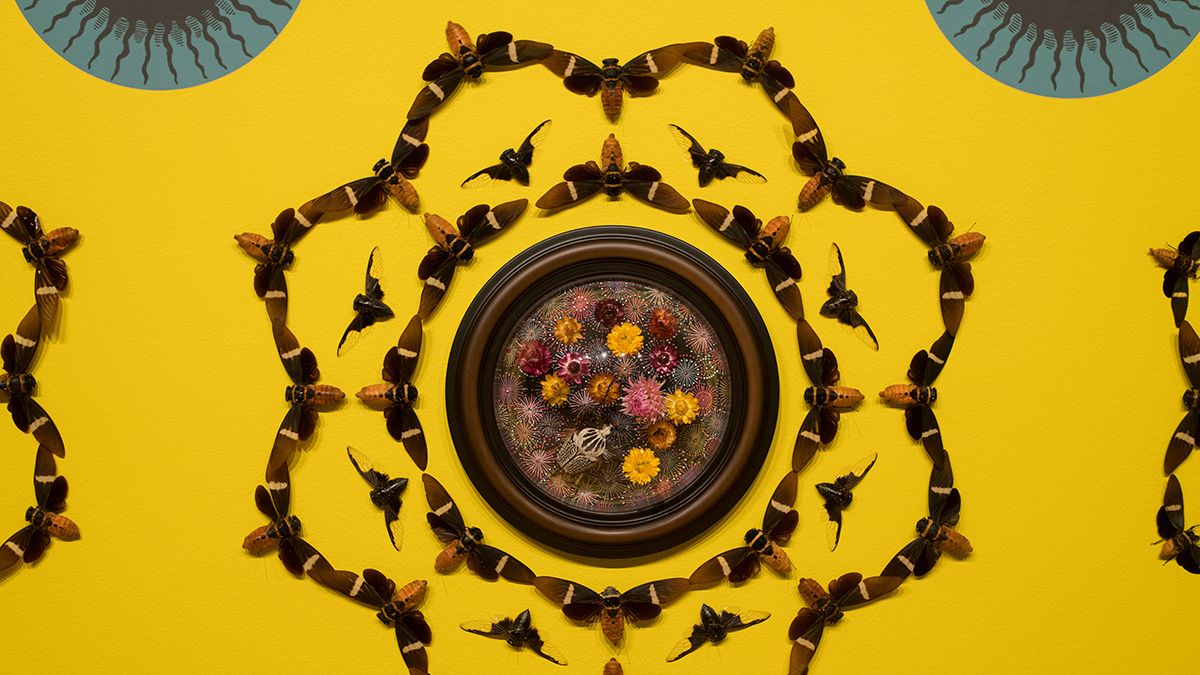MADISON, Wis. — Jennifer Angus is a professor of design studies at the University of Wisconsin-Madison. About 22 years ago, she moved to the city, bringing with her a passion for insects and art.
“I got into it when I was doing research in northern Thailand on tribal minority dress, and I came across a garment that was embellished with these hard outside wings that are known as elytra,” said Angus.
Growing up in Canada, Angus had never experienced beautiful insects beyond butterflies. When she got to see jewel beetles for the first time, she was hooked.
“I found myself more and more interested in insects, but my first love and what I teach here in Madison is textile design,” said Angus.
Then it hit her. She was going to combine both insects and textile design.
Angus’ art has become very popular. She’s held exhibitions throughout the U.S., Australia, Canada, France, Germany, Japan and Spain.
“It is kind of playing with people’s fear of insects, so you, from a distance, see a wall and it looks like beautiful wallpaper, but then you walk up and you discover that pattern, that wallpaper is made of insects,” said Angus.
Originally, Angus started combining insects and textile design purely out of interest. Over the years, people started asking questions about them, and through research, she found out how important insects are to the planet.
“I think there will be people who walk into the exhibition and say ‘how many insects died for this show?’ And that is exactly what I would like people to talk about. We are in a crisis situation. Insects are disappearing very rapidly,” said Angus.

According to the National Academy of Science Insect Populations, the insect population has been declining by 1-2% a year.
Dan Young is a professor of entomology at the UW-Madison. Young said a world without insects is a world we do not want to live in.
“We rely incredibly heavily on insects for pollination more than most people recognize and without insects, most of the food you see in the grocery stores wouldn’t be there,” said Young.
Young said humans tend to look at things and think, “what is this doing for me?”
But he said it’s time for people to take a step back and stop thinking so selfishly.
“We tend to look at the world through our own eyes and ask what good are insects to us?” said Young. “But what good are we to the planet?”
In order to help insects survive for the long-term, Young said humans need to do better with agriculture. Most of the pesticides that are used to keep insects away from plants end up killing them. He also said humans should add more natural corridors for insects to travel.
“Right now we have insects that are in small areas and they don’t have a way to connect to other populations, and it sort of leads to this inbreeding that can lead to their extermination from local areas,” said Young.
Young said there is something homeowners can do as well.
Many homeowners mow their lawns frequently. However, Young said they should allow the lawn to be more natural because it creates a habitat for bugs to live.
“We often think of dandelions of things to spray or get rid of when in fact, they are pretty good flowers for pollinators to use,” said Young.
Angus, who has been using the same insects in her exhibitions for 20 years, said she hopes people will come to see her work and let it change the way they think about insects.
“For some people, their experience with insects is, they bite, they sting, so they [are glad they are dying],” said Angus. “That is not great news. We know of bees as pollinators, but so are other insects; we need them to decompose matter and most importantly, they are a vital link in the food chain.”
If you are interested in seeing some of Angus’ art, she currently has multiple exhibitions set up across the U.S. They include:
Museum of Wisconsin Art in the surrealist gallery
“Eat Me, Drink Me” Park City Utah at the Kimball Arts Center
“Fragile Earth” , BrandyWine River Museum of Art Philadelphia



